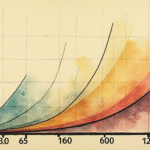Background on Argentina’s Economic Situation
Argentina, a South American country known for its rich history and diverse culture, has been navigating economic challenges for years. The nation’s economy is heavily influenced by global commodity prices, as agriculture and natural resources play significant roles. In this context, the recent announcement by Minister of Economy Luis Caputo sheds light on Argentina’s fiscal performance in May 2025.
Key Fiscal Indicators in May 2025
In May 2025, the National Public Sector in Argentina reported a primary surplus of $1.69 billion (approximately 1,456 million US dollars or 0.2% of the GDP), according to Minister Luis Caputo. This positive outcome was achieved despite an 18% real interannual decline in revenue.
On the financial front, the surplus stood at $662.123 billion. Over the first five months of the year, the primary surplus reached 0.8% of the GDP, while the financial surplus was 0.3%. Minister Caputo also mentioned that net interest payments amounted to $1,034.795 billion within the same month.
Impact of Revenue Decline
The revenue decline in May was influenced by several factors, including the elimination of certain taxes (PAIS and regional economy retentions), a temporary decrease in retentions, and the repeal of suspensions on exclusion certificates. These changes affected the collection of customs duties for IVA and Ganancias taxes, as well as a reduction in import tariffs.
Moreover, May’s revenue was impacted by a high base of comparison for the Ganancias tax in May 2024, which included the December 2023 devaluation.
Expert Analysis
Nadín Argañaraz, Director of the Instituto Argentino de Análisis Fiscal (IARAF), provided additional insights. He noted that total income decreased by 2.3% real interannually during the first five months of the year, while primary expenditure grew by 5.6% real interannually.
The accumulated surplus (0.9% of the GDP) experienced a 0.08-point decrease compared to May 2024. Monthly income reached $11,374,130 million.
Key Questions and Answers
- What is a primary surplus? A primary surplus refers to the government’s revenue minus its non-interest spending. It is a crucial indicator of fiscal health, as it shows whether a country can finance its essential services without relying on borrowing.
- Why is the revenue decline significant? The decline in revenue, coupled with continued spending growth, poses challenges for Argentina’s fiscal stability. It may necessitate adjustments in spending priorities or revenue generation strategies to maintain a balanced budget.
- What factors contributed to the revenue decline in May 2025? Several elements played a role, including tax eliminations, temporary reductions in retentions, and the repeal of exclusion certificate suspensions. Additionally, a high base of comparison for the Ganancias tax in May 2024, influenced by a December 2023 devaluation, affected May’s revenue.
- How does Argentina’s fiscal performance compare to previous years? According to IARAF’s analysis, Argentina’s accumulated surplus decreased by 0.08 points compared to May 2024. This suggests that, while the country has maintained a surplus, it faces ongoing fiscal challenges.






